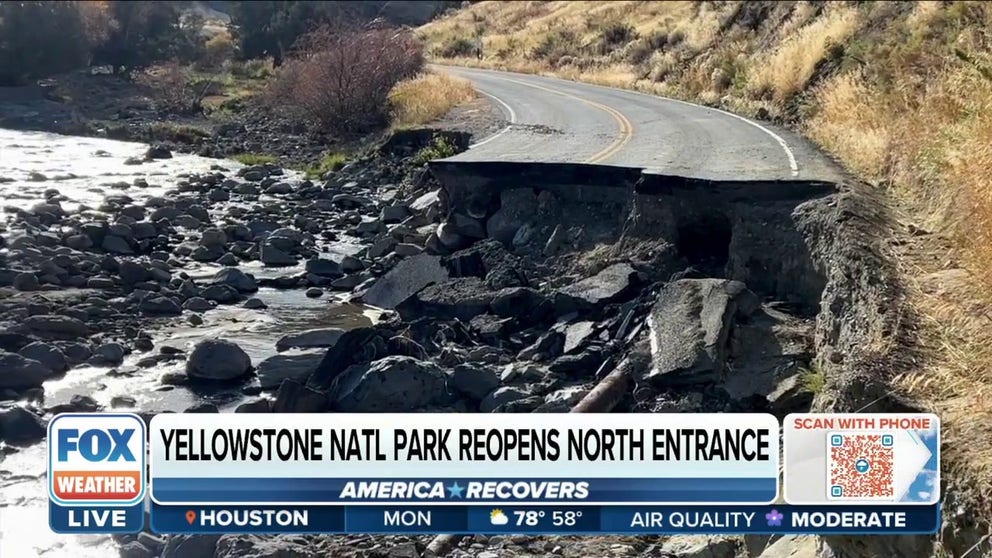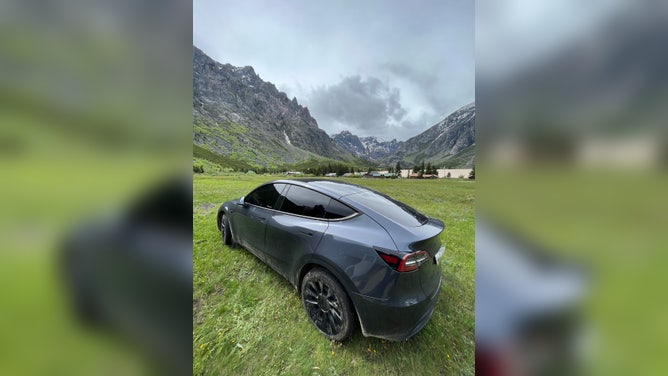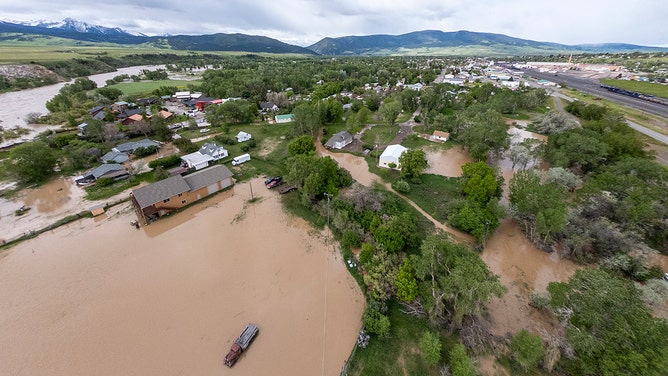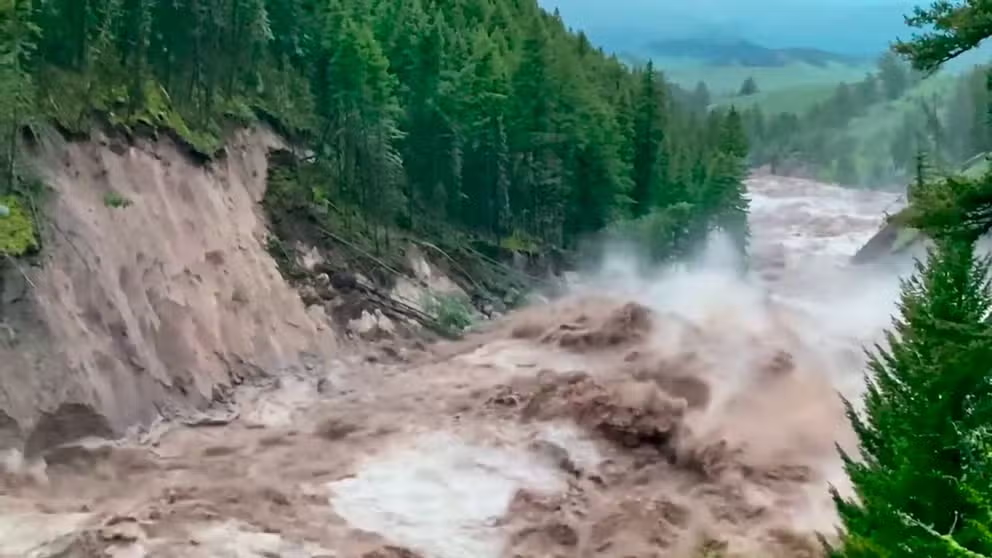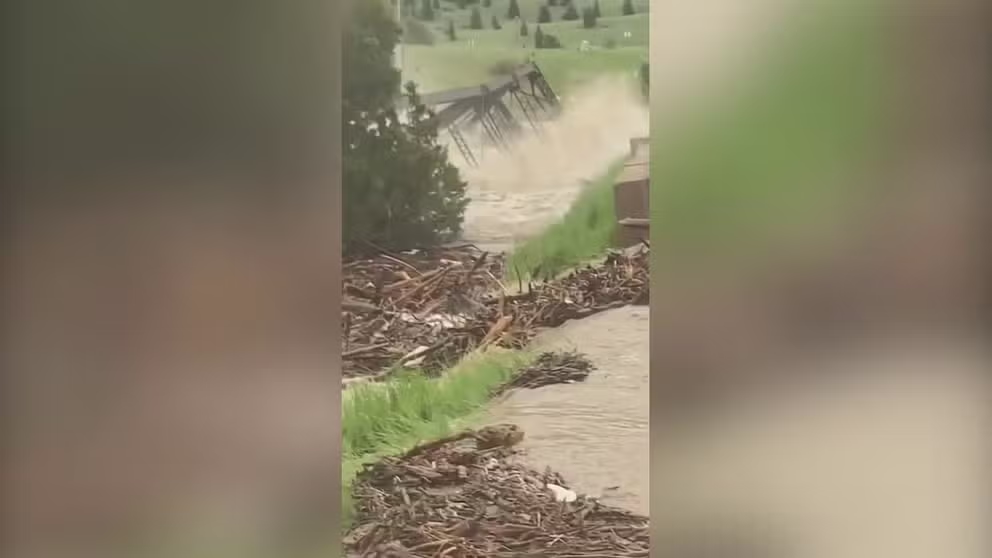Yellowstone National Park's North Entrance reopens months after catastrophic flooding destroyed roads, bridges
Engineers and workers with state and federal groups came together and worked seven days a week to clear debris and rebuild roads, and the result is giving Yellowstone National Park a rebirth of sorts and helping the economy get back on track.
Yellowstone's North Entrance reopens after flooding, rockslides, mudslides collapsed roads
One of the main entrances to Yellowstone National Park reopened on Sunday. FOX Weather's Robert Ray reports.
YELLOWSTONE NATIONAL PARK - One of the main entrances to Yellowstone National Park reopened on Sunday, more than four months after catastrophic flooding destroyed roads and bridges inside the United States' first national park, as well as surrounding communities.
Engineers and workers with state and federal groups came together and worked seven days a week to clear debris and rebuild roads, and the result is giving Yellowstone National Park a rebirth of sorts and helping the economy get back on track.
HOW TO WATCH FOX WEATHER ON TV
On the morning of June 13, 2022, flooding and rockslides destroyed a main road near Yellowstone National Park's North Entrance.
Homes were washed away in the nearby town of Gardner, Montana, and thousands of visitors inside the park needed to be evacuated.
Over the weekend, Montana Gov. Greg Gianforte, joined by Yellowstone National Park superintendent Cameron Sholly, federal and state officials, engineers and locals, celebrated the quick recovery and construction of a road that sustains tourism and livelihoods.
"So, in just a couple of days, this road is going to reopen," Montana Gov. Greg Gianforte said at a news conference. "And I want all of America to know that Yellowstone is reopened. And we want you to come back and visit."
'IT WAS JUST INSANE': HISTORIC FLOOD SWALLOWS HOUSING UNIT ALONG RAGING YELLOWSTONE RIVER
Watch: Video shows raging rivers, destruction from catastrophic Yellowstone flooding
The National Park Service released a video showing raging rivers and destruction as the result of catastrophic and devastating flooding at Yellowstone National Park in June.
The undertaking was massive. An old, one-lane road dating back to 1879 has been re-engineered to become a modern, two-lane paved highway.
The road has steep grades, sharp curves and speed limits between 15 and 25 mph while visitors travel along the new route.
"This is really all hands on deck," Sholly said. "For this (flooding) to happen in mid-June, going into a busy summer, it's just catastrophic for some of these local economies. And for us to get these roads rebuilt and ready to go, not only for the winter season but going into next year especially, is absolutely essential and something we couldn't have done by ourselves."
SATELLITE IMAGES SHOW DRAMATIC CHANGES TO MONTANA LANDSCAPE AFTER UNPRECEDENTED FLOODING
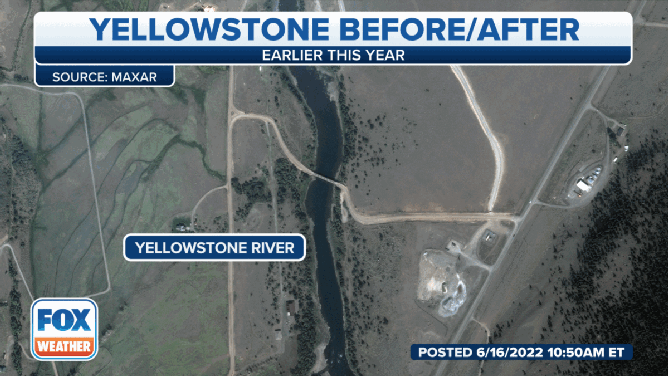
Satellite images show drastic changes to the Montana landscape after historic flooding this week.
(FOX Weather)
The four-mile stretch between Yellowstone's North Entrance in the town of Gardner and the terraces of Mammoth Hot Springs were expected to open to vehicle traffic on Tuesday, but Sholly made the announcement on Sunday afternoon that the road was reopened two days early.
"Well, I just want to say 'thank you' to the leadership here in the park, Superintendent Cam Sholly and the resiliency of our Montana businesses," Gianforte said. "They've gotten through a tough period here, and I'm just thrilled to be able to celebrate the opening of the park so that we can see the vibrancy come back."
Roughly $60 million federal dollars of infrastructure funding has been invested.
Most visitors will return in the spring as the thaw begins. Though as the park transitions from autumn to winter on the sides of a new road, one can see elk, antelope and pronghorn.
FAMILY WATCHED HELPLESSLY AS THEIR HOME WASHED AWAY IN YELLOWSTONE FLOOD
Montana bridge swept away as severe flooding hits Yellowstone National Park
A Montana bridge was swept away on Monday as severe flooding hits Yellowstone National Park.
The bison roam freely amid the majestic mountains, and the Yellowstone River flows with a confident composure.
Yet the stewards of this precious landscape are aware that mother nature may strike again.
"These events are happening more and more frequently," Sholly said, "I mean, most of the infrastructure in U.S. national parks was built in the (19)20s, the 30s, the 40s, really before climate change was really part of the conversation. As so as we see these climate events, whether they be hurricanes or fires or floods, impact our infrastructure. In some ways, it's an opportunity. When we go to look at rebuilding, are we doing the things that are needed to build in a resilient way that are going to make our infrastructure better and more prepared to handle what are sure to be future events coming our way?"
And with record amounts of tourists traveling to Yellowstone National Park over the past few years, the national park is essential not only to the economy but the ecosystems and the environment.
